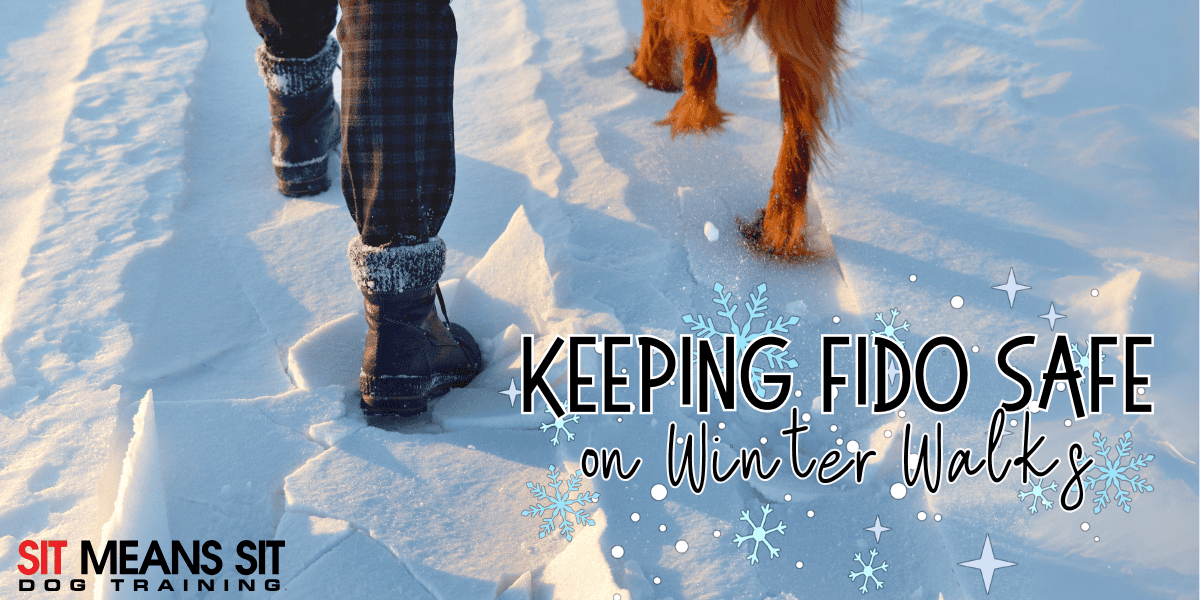Winter is a wonderful time to enjoy the outdoors with your dog, but it does come with a set of challenges. Snow, ice, and freezing temperatures can make walks a little trickier, so it’s important to take a few extra steps to keep your dog safe and comfortable. Here are some tips to make sure your furry friend stays warm and safe on winter walks.
Bundle Up Before Heading Outside
Even though your dog has a fur coat, they still need some extra warmth in extremely low temperatures. Before you and your dog head out into the cold, make sure they’re dressed for the weather. While some dogs are built to handle cold winters (looking at you, Huskies!), others, like small or short-haired breeds, need a little extra help staying warm. A cozy dog coat or sweater is a great way to keep them toasty, especially if it’s windy. If your dog starts shivering or looking for shelter, it’s time to head inside. On really cold days, keep walks short—you can always make up for it with a few extra indoor playtime sessions.
Protect Your Dog’s Paws
When you’re getting your pup ready for outdoor adventures in the winter, don’t forget their paws! Cold, icy surfaces are tough on dogs’ feet, leading to discomfort or even cracked, bleeding paw pads. Consider getting a pair of dog booties to keep their paws safe and cozy. These will shield their feet from snow, ice, salt, and chemicals, keeping them warm and protected. If you notice their paw pads getting dry or cracked, apply a good paw balm to help soothe and heal them.
Make Walks Shorter and More Frequent
During the winter months, adjusting your walking routine to suit the colder temperatures is important. Instead of going for one long walk, consider breaking up the time outside into shorter, more frequent walks to prevent your dog from getting too cold. Experts recommend keeping winter walks no longer than 30 minutes long. The best time of day to take your pup for a walk during the winter is when the sun is out since the temperature drops once the sun goes down. Plan on walking your dog between 9 a.m. and 3 p.m. to stay as warm as possible.
Watch Out for Winter Chemicals
Watch for Signs of Frostbite or Hypothermia
When dogs are exposed to extreme cold for extended periods, they risk developing frostbite or hypothermia. Signs of frostbite include blue or gray skin, swelling, dead skin patches, blisters, and extremely cold skin. If your dog starts acting weak, has muscle stiffness, or seems to be having trouble breathing, they may be experiencing hypothermia. If you notice any of these signs, bring your dog inside immediately and warm them up slowly. Then, contact your vet right away.
Know Fido’s Limits
Not all dogs are built for extreme cold, and it’s important to know when it’s too cold for your dog. While some dogs are happy to play in the snow all day, others might struggle in freezing temperatures. If your dog starts lifting their paws off the ground, acting sluggish, or shivering, it’s time to head back indoors. Once you’re home, warm your dog up slowly. Wrap them in a cozy blanket or let them curl up near a heater (but not too close!).
Winter walks don’t have to be stressful! With a bit of extra preparation, you can keep your furry friend safe in snow and ice this season. Happy walking!
Check Out These Posts for More Winter Tips!
Tips for Keeping Your Dog Active in the Winter
Winter Accessories That Will Keep Your Dog Warm All Season Long

